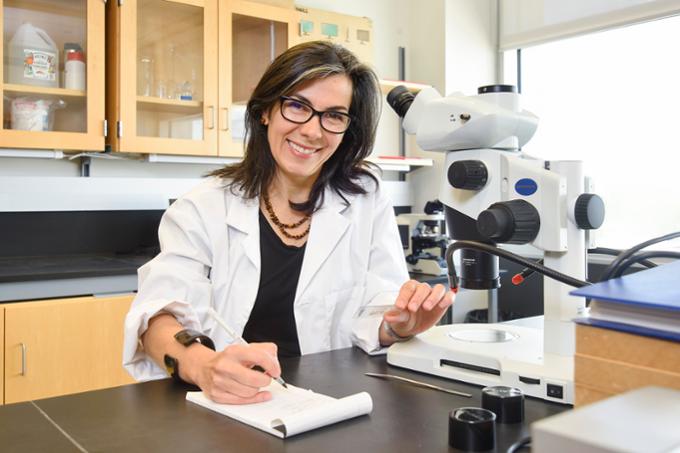February 11 is International Day of Women and Girls in Science. It’s a time to reflect on the accomplishments of female scientists and to think about why the United Nations thought that it was important that we mark this day each year.
Here are a few questions to get you thinking about the answer….
- How many female scientists can you name?
- What are some of their inventions or discoveries?
- Having some trouble naming more than one or two (or worse… none!), ask yourself why this is.
- We’ll help you out a bit. Know who Jane Goodall is? Ada Lovelace? Do the names Marie Currie, Jennifer Doudna, Rosalind Franklin or Mary Anning ring a bell?
- What about the name of a female scientist closer to home?
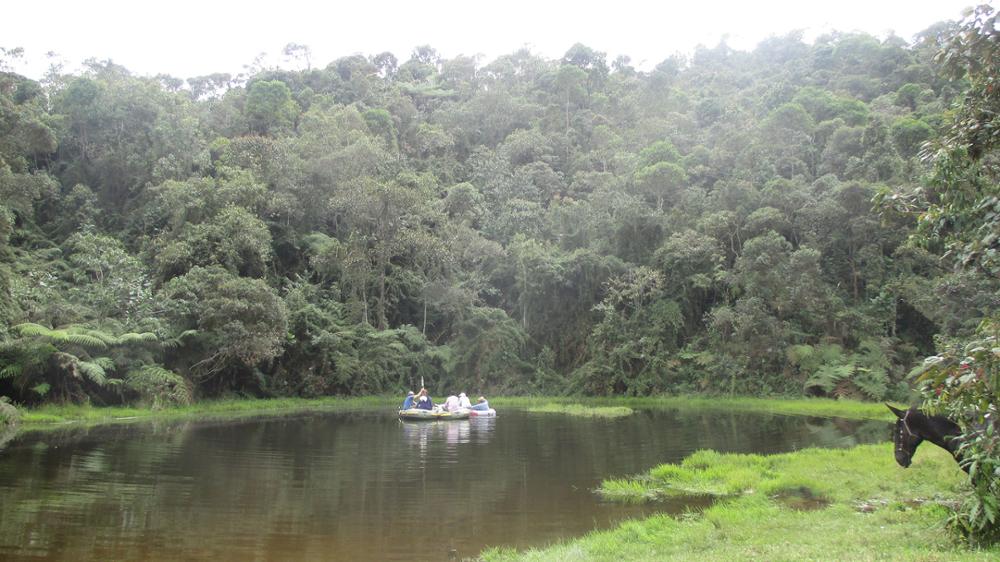
Hands-on learning! Dr. Velez Caicedo and students coring a Columbian lakebed for fossil samples.
Photo: Dr. Velez Caicedo
We’re happy to introduce you Dr. Maria Velez Caicedo, a University of Regina geologist whose work is helping to explain what causes our ecosystems to change by looking into their past.
If science is what you want to do, do it! No matter what. We need more women in science.
Dr. Maria Velez Caicedo, Geology
Find out more about Professor Velez Caicedo below:
What got you interested in geology?
Growing up, I was very interested both in fossils and in the evolution of humans. And I wanted to go and dig for the fossils of our ancestors.
Why did you pursue it as a career?
I pursued it as a career because as a geologist I would get to dig for fossils in the field, and also work in the lab, preparing samples.
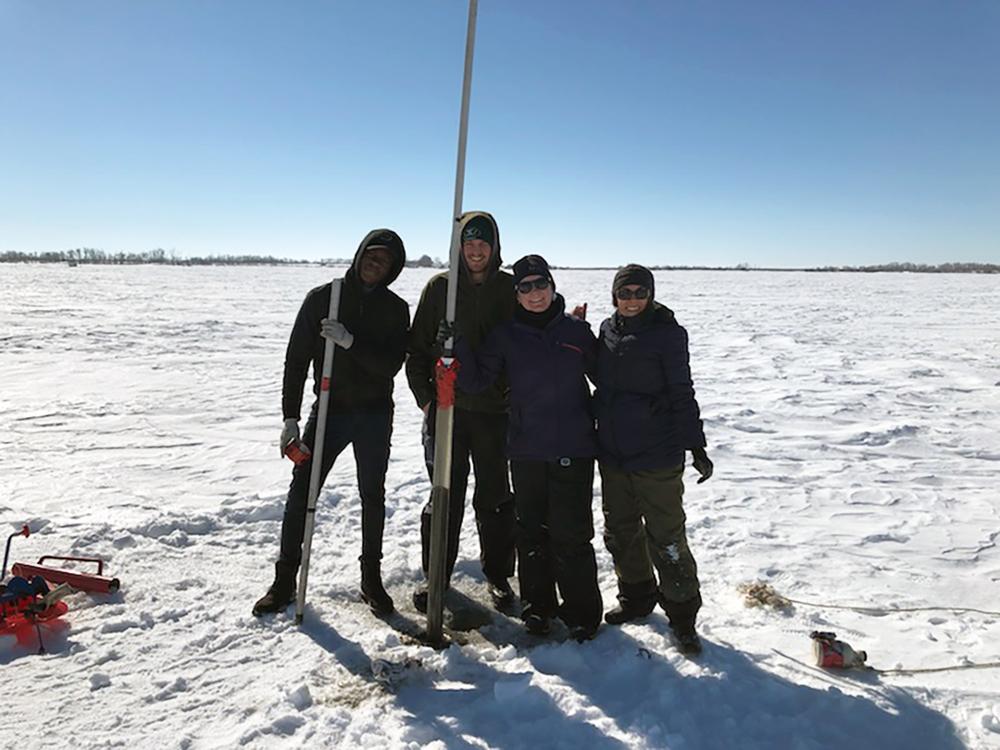
Winter fossil hunting in Saskatchewan’s frozen Quill Lake.
Photo: Jenya Kistanov
What is your research and what is its real-world application?
I study microfossils, which are incredibly tiny remains of bacteria, protists, fungi, algae, animals, and plants. They are usually between 0.001 mm and 1 mm. Using microfossils I can recreate ancient environments that no longer exist - that helps us to identify and understand the forces that cause ecosystems to change.
From your point of view, why is it important to celebrate women in the sciences?
Because women have made significant contributions that have changed our understanding of the world. Because these women and their contributions have gone unnoticed for a very long time and because women still face many barriers in science.
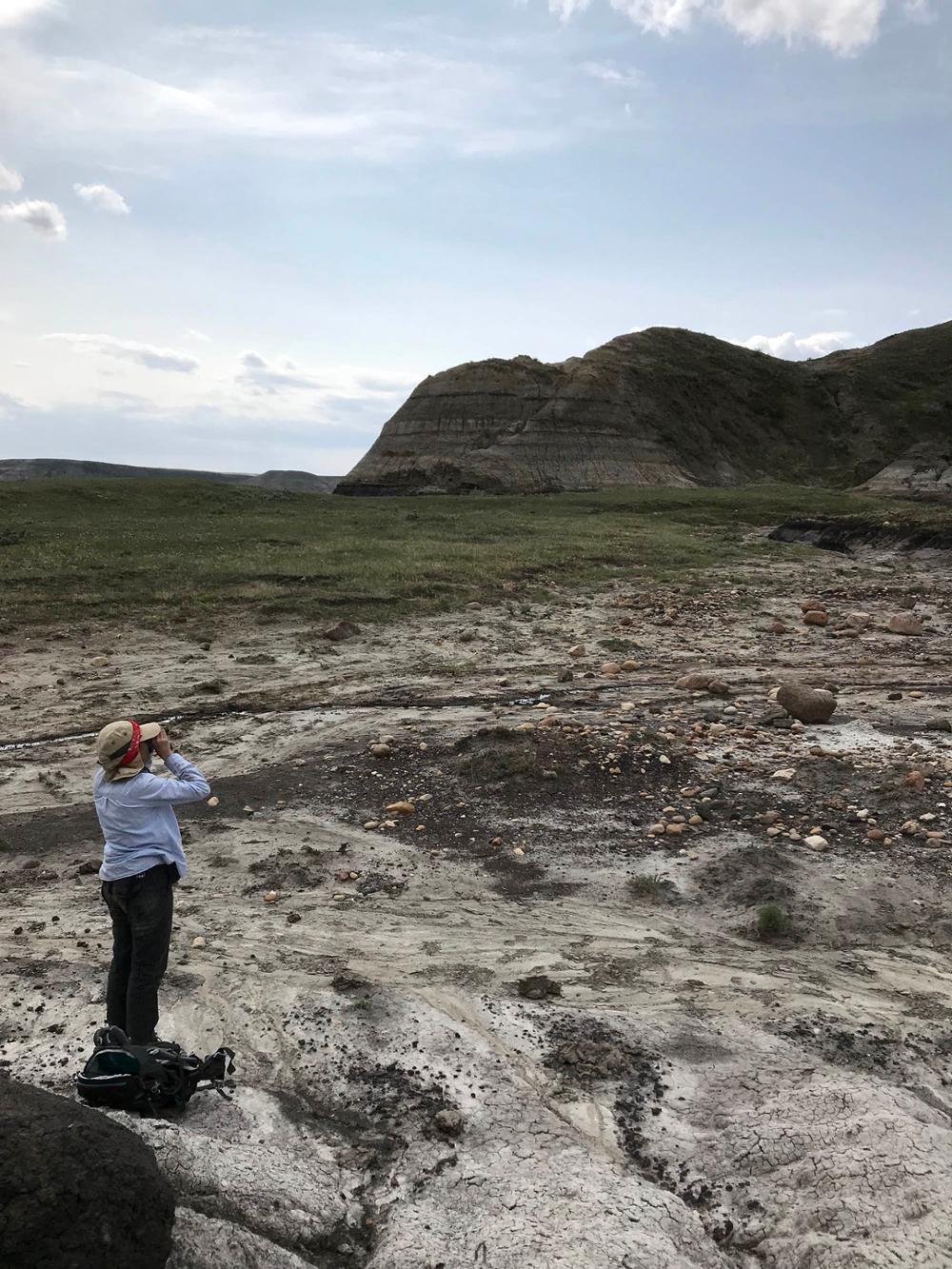
The Big Muddy in Saskatchewan’s Badlands finds Dr. Velez Caicedo on the lookout for Cretaceous diatoms. The Cretaceous period lasted from about 145 to 66 million years ago.
Photo: Michaela Balkwill
What challenges do you face as a woman in the sciences?
The perception by some peers that our science is less valuable or less interesting, is a major barrier. I also do my fieldwork in remote and rural areas in Colombia, and, as a woman, I fear being alone in the field. This is something faced by many women who do fieldwork.
What would you say to female students interested in going into the sciences, but who don't see themselves represented?
The world is changing, and it is easier now to conduct scientific research as a female. It does not matter others’ perceptions of who you are - if science is what you want to do, do it! No matter what. We need more women in science.
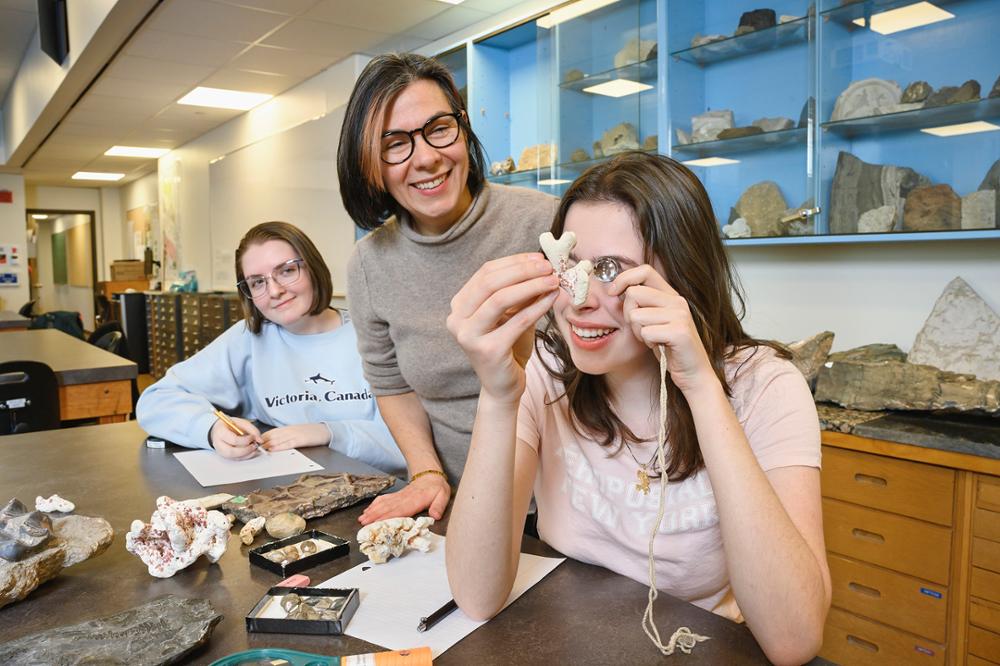
To the naked eye, the sample appears to undergrads Lauren Lindsay and Kathleen Kreutzer as tiny spots, but, under the lens, a pattern of beautiful of tiny holes is revealed - all that remains of a long-since-vanished colony of small animals.
Photo: University of Regina
How can women and girls get involved in science?
If you are interested in the sciences, talk to a science professor – contact them, go to a 100-level class at the University, ask a professor (we are all listed on uregina.ca) for a lab visit or a lab tour and get a feeling for what it is like to do actual science. You won’t regret it.
Love science and want to find out how to make it your career? Register today for Choose UR Own Adventure!
